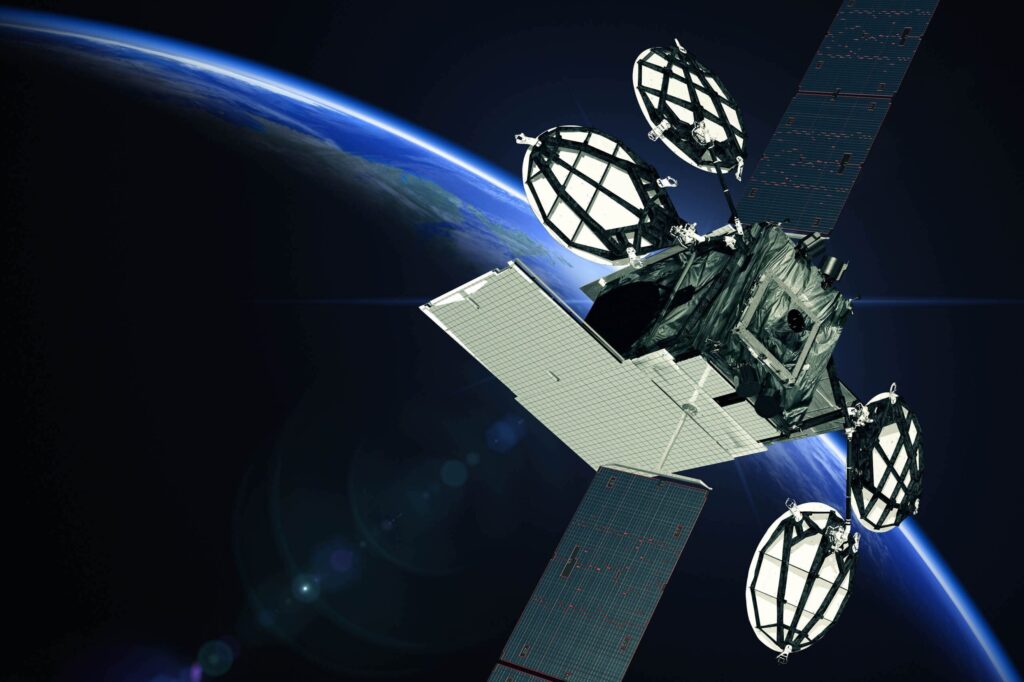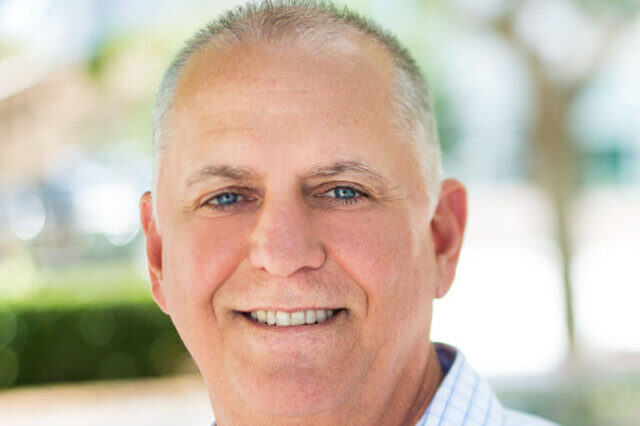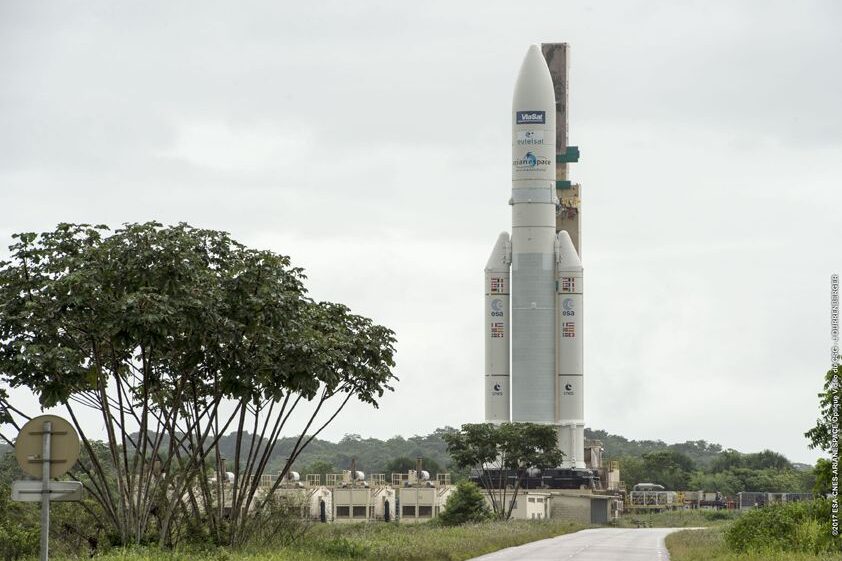
The Earth’s orbit is quite a crowded space.
In addition to the Moon, 6,000 satellites circle the Earth every day. Out of these, only 2,666 are currently operative and are used to obtain information about the blue planet and its weather, as well as a whole array of commercial solutions. In fact, over half of these operational satellites (61%) provide communications services, including satellite TV, Internet of Things connectivity and internet.
The global satellite industry is growing at an annual rate of 6.51% and it’s expected to reach a worth of $508 billion by 2024. Although in the past it was dominated by governmental organisations and large corporations, rising demand for digital connectivity has driven many newcomers to this industry with roaring success. The most blatant example is Elon Musk’s SpaceX, which has become the world’s largest satellite operator despite having launched its first satellite only five years ago.
But traditional players like Viasat are ready to take on the challenge.
After 30 years providing high-speed satellite broadband services and secure networking systems, Viasat is taking steps to continue to lead the market through a leadership change. Last month, the company’s Co-Founder and CEO Mark Dankberg stepped down from the role, although he is staying as Executive Chairman. Rick Baldridge, previously Viasat’s COO, has taken on the leadership of the company. Speaking to Digital Bulletin, he explains the reasons behind the transition and Viasat’s plans for the future.
“The transition just seemed logical to Mark and me,” Baldridge says. “Running the business has been mostly in my camp for a while, so it was a natural step. What it will do is extend the amount of time that Mark can be part of the company and continue to influence where we’re headed strategically. I’m more enabling that than I am stepping into his shoes.”
Soon after Baldridge’s appointment, Viasat announced its intentions to buy the remaining 51% share of Euro Broadband Infrastructure (EBI), a wholesale business the company had created alongside Eutelsat, for $167.5 million. With this deal, Viasat steps up its presence in Europe ahead of next year’s launch of its ViaSat-3 global satellite constellation, which will provide global and affordable internet.
“It had become a little bit of a difficult situation, with misaligned interests between us and Eutelsat,” Baldridge admits. “This gets the disruption off the table. We will be competitors, that’s fine. There is plenty of room for both of us.”

Although analysts including Jefferies’ Giles Throne have argued that Eutelsat got the better end of the deal, Baldridge disagrees: “I think it’s good for both of us. I look forward to working with Eutelsat in the future when our interests are aligned.”
The deal will allow Viasat to make distribution agreements and start testing its next generation of satellites, the ViaSat-3, without Eutelsat’s approval. Moreover, the agreement gives Viasat control of EBI’s high-speed KA-SAT satellite, which Baldridge considers to be able to bring significant value, despite belonging to a decade-old generation.
“We’re really glad to have it because it helps with redundancy, it helps to provide back-up, and I think we can do as good a job as anybody in trying to get value out of that satellite for the long run,” Baldridge says. “We have done it in the past again and again.”
The company is indeed known for having extended the life of several other older satellites, such as the WildBlue-1 and Anik F2 that Viasat obtained alongside its acquisition of WildBlue Communications in 2009. Viasat’s network approach blends the capacities of multiple satellites, allocating resources between them and extending their useful life and the economic value that the company can obtain out of them.
However, these satellites will soon be relegated to supporting roles for Viasat’s new generation star player: Via-Sat-3.

Over the next two years, Viasat will launch the ViaSat-3 constellation, a trio of satellites that will provide internet connectivity all over the world. Each of them will offer one terabit or more of total network capacity, which constitutes a substantial jump from the company’s previous models: ViaSat-1 (140 Gigabit per second) and ViaSat-2 (260 Gbps). The first satellite, covering the Americas, will be launched next year, while the launches of the ones covering the Europe, Middle East and Africa (EMEA) and the Asia-South Pacific regions have been scheduled for 2022.
“We need to get ready for that launch at a scale that we’ve never had to be,” Baldridge says. “And so we need to be up and running and ready, with distribution and leadership in place for many of these countries over the next year.”
One region where Viasat is expanding significantly is Europe. The company already provides retail broadband services to European countries such as Spain, Norway and Poland, and high-speed in-flight connectivity (IFC) for airlines including Finnair, EI AI and KLM. However, the acquisition of EBI and the launch of ViaSat-3 will significantly increase its presence in the continent and strengthen its capabilities in regards to video content, the main driver of the demand for digital connectivity in Europe at the moment.
“Think of an electric utility, it has to have enough capacity to serve the users during the time of highest stress. In satellite, that highest stress is really driven by video; it’s 70-80% of the traffic during the busiest times. We do that very well with these new generations of satellites: multiple users within a household can watch their content at higher speeds than we think any other provider can provide.”
The ViaSat-3 satellites will also bring connectivity to many developing regions of the world at an affordable cost point, expanding Viasat’s offer in Latin American countries such as Mexico, Brazil or Guatemala, and reaching new ones in places like the African continent.
“One thing that is really exciting for me is that, with the type of capacity we’re bringing into that marketplace, we can do things at a cost-point that has never been available before,” Baldridge explains. “We are excited about bringing connectivity to villages so we can bring educational content, healthcare, commerce, banking transactions, and more, into markets where people have had to travel, and many times by foot to other regions to get stuff done.”
Baldridge also stresses Viasat’s commitment to work with local authorities and run the local branches with local people, to avoid disrupting these communities. “If we do well, then the result isn’t just this American company showing up to extract a bunch of money, but a partnership in those regions with people that want to accomplish things that they can’t do,” Baldridge says.

This desire to accomplish things believed to be impossible is also what’s driving the technology behind ViaSat-3: the first payload module structure.
“We had to move away from traditional satellite architectures from a payload structure to a complete, much more digital highly-integrated facet, and there just wasn’t enough real estate left in those satellites payload structures to be able to accomplish what we’re accomplishing,” Baldridge stresses.
Since no company had the necessary technology, Viasat took it upon itself to develop these new model structures in-house, which has been used in the design of ViaSat-3. Over the next few months, this new payload structure will be shipped to Boeing to be integrated into its 702 platform.
Although Baldridge feels proud of this achievement, he reveals that Viasat “would have bought” that technology had it been developed by other satellite companies. For this reason, he welcomes the disruption that the space industry is undergoing at the hands of newcomers such as SpaceX.
“I think the new entrances make the marketplace exciting,” Baldridge says. “Some older players might have a more difficult time with that, but we have been disrupting this area ourselves for a long time. We have ViaSat-3, ViaSat-4 and Via-Sat-5 designs that have even significantly higher capacity per dollar invested; so we like this race.”
According to Baldridge, the arrival of these new companies is a sign of the growth of the satellite market and its benefits in providing internet access to regions otherwise considered to be inaccessible. Instead of feeling threatened by these new players, Baldridge challenges them: “The real question is ‘Can these new entrances provide what customers want at a price point that’s competitive? We have designed our entire system to do that.”
In the connectivity industry, customer needs are simple: they want their connection not to fail. The most common cause of buffering and congestion in a network is primarily video-rich content, from streaming platforms to social media applications, which has been a focus of Viasat’s new capabilities and satellite designs.
Despite the increased competition, the arrival of these new entrances could also provide innovative solutions for the industry. Baldridge stresses one technological development in particular that, in his view, will “drive cooperation” between newcomers and traditional players in the satellite space: cloud. And Viasat is keeping its eyes out for companies that might be able to enhance its technology in that regard.
“We’re very known for buying early-stage companies that have a technology that we think is absolutely critical to what we’re trying to accomplish,” he stresses. “But we’ll do the other vertical stuff as well. We bought our customer WildBlue as a way to help jumpstart our move into the broadband retail services. So, we’ll do that in verticals that we think our time to market is quicker in that route, as long as there’s someone out there that we think is good.”
Keeping an eye on these new technologies, and with the launch of these new satellites in the horizon, the first year of Baldridge’s leadership of Viasat is set to be an exciting one. However, his vision for the company lies far beyond 2021.
“You don’t want to be known as the person who walked away from something and it fell apart,” Baldridge says. “You want to have built something that continues to grow and grow better than it was when you were there. So what I’m hyper-focused on is getting the next generation of talent in and refocusing Viasat’s future on the customer. I think internet service providers just don’t have a great reputation. They’re one of the most hated retail services out there. We want to change that, with our company.”
Viasat’s goal with its new satellite constellation is to bring connectivity where it’s needed and wanted most: to homes all over the world, to faraway communities, to soldiers in the field, and to people in the air and at sea. Baldridge might be shooting for the Moon but, after all, the Moon is just one of 6,000 satellites circling the Earth.



